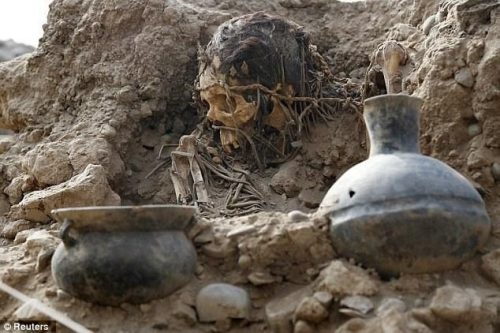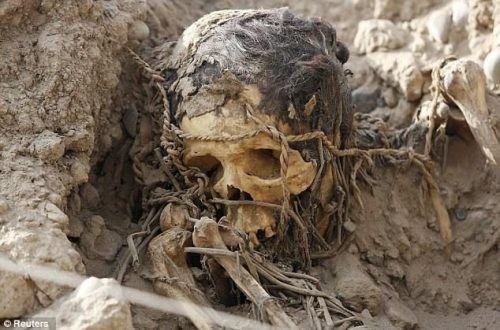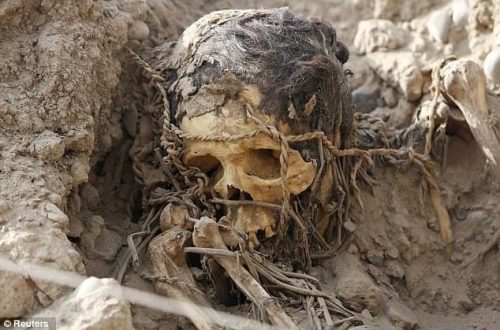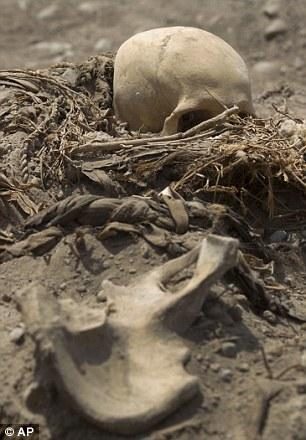
The world of archaeology has been set abuzz with a discovery that defies time and expectation. In the heart of Peru, buried deep within the sacred earth, 1,400-year-old mummies belonging to the enigmatic Pre-Inca civilization have recently come to light. This astonishing find has left experts and enthusiasts alike in awe, offering a glimpse into a past that has long been shrouded in mystery.
Unearthing the Enigma
Peru, with its rich archaeological heritage, has always been a treasure trove for those seeking to uncover the secrets of ancient civilizations. However, the recent revelation of these Pre-Inca mummies has taken the excitement to a whole new level. These remarkably preserved human remains were discovered in tombs located in the coastal region of Lambayeque, an area known for its historical significance.
The mummies were found in a site called Pampa La Cruz, and what makes this discovery truly remarkable is the fact that it challenges established historical narratives. Until now, it was believed that the Pre-Inca civilization, which predates the Inca Empire, had practiced different burial rituals. The discovery of these mummies challenges that assumption, offering a fresh perspective on this ancient culture.
A Glimpse into Pre-Inca Life
The Pre-Inca civilization, which thrived in what is now modern-day Peru from around 900 to 1470 AD, is a relatively lesser-known chapter in South American history. The Inca Empire, with its grandeur and vast territories, often overshadows its predecessor. However, this discovery sheds light on the lives of the people who lived before the rise of the Inca.
The mummies found in Pampa La Cruz are believed to date back to the Wari culture, a significant pre-Inca civilization known for its advanced pottery, textiles, and urban planning. These mummies could provide valuable insights into the customs, rituals, and daily lives of the Wari people.

The Preservation Miracle
One of the most striking aspects of this discovery is the exceptional state of preservation of the mummies. Despite the passage of more than a millennium, these ancient remains have remained remarkably intact. Archaeologists credit the arid climate of the region for this extraordinary preservation, which includes not only the mummies themselves but also the textiles and offerings found alongside them.
These mummies are wrapped in intricate textiles, adorned with vibrant colors and patterns that hint at the advanced weaving skills of the Pre-Inca civilization. Such well-preserved textiles are invaluable for researchers seeking to understand the artistic and cultural achievements of this ancient culture.
A Window into the Afterlife
The burial site itself is a treasure trove of artifacts and clues. Archaeologists have found a variety of offerings and objects that provide insights into the Pre-Inca beliefs about the afterlife. Ceremonial pottery, pottery vessels, and figurines are among the items uncovered in the tombs, all carefully placed to accompany the deceased on their journey to the next world.

The presence of these offerings suggests a rich and complex belief system that centered around the idea of an afterlife. It is a poignant reminder that, for these ancient people, death was not an end but a transition to another realm.
Archaeological Implications
The discovery of the 1,400-year-old Pre-Inca mummies in Peru has significant implications for the field of archaeology. It challenges long-held assumptions about the burial practices of the Pre-Inca civilization and offers an opportunity to rewrite the historical narrative of this enigmatic culture.
Researchers are eager to conduct further studies on these mummies to learn more about the Wari people, their customs, and their contributions to the tapestry of South American history. The well-preserved textiles and artifacts found at the site are also of immense value, providing a glimpse into the artistic and cultural achievements of the Pre-Inca civilization.
Preserving the Past for the Future
As with any archaeological discovery, there are concerns about the preservation of these ancient remains and artifacts. Proper conservation efforts will be essential to ensure that future generations can continue to study and learn from this remarkable find. It is a delicate balance between satisfying our curiosity about the past and ensuring that we do not harm the very treasures we seek to understand.

The discovery of the 1,400-year-old Pre-Inca mummies in Peru is a testament to the enduring allure of archaeology. It reminds us that, beneath the surface of the earth, there are still countless mysteries waiting to be uncovered. As researchers delve deeper into the secrets of these mummies, they are sure to unveil more about the lives and beliefs of the ancient people who called Peru home over a millennium ago. In doing so, they continue to enrich our understanding of the rich tapestry of human history.






